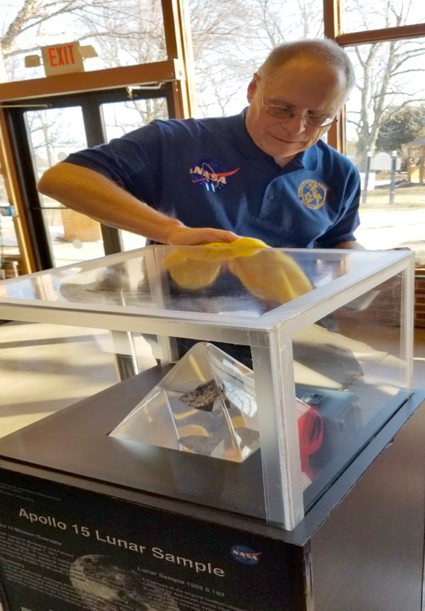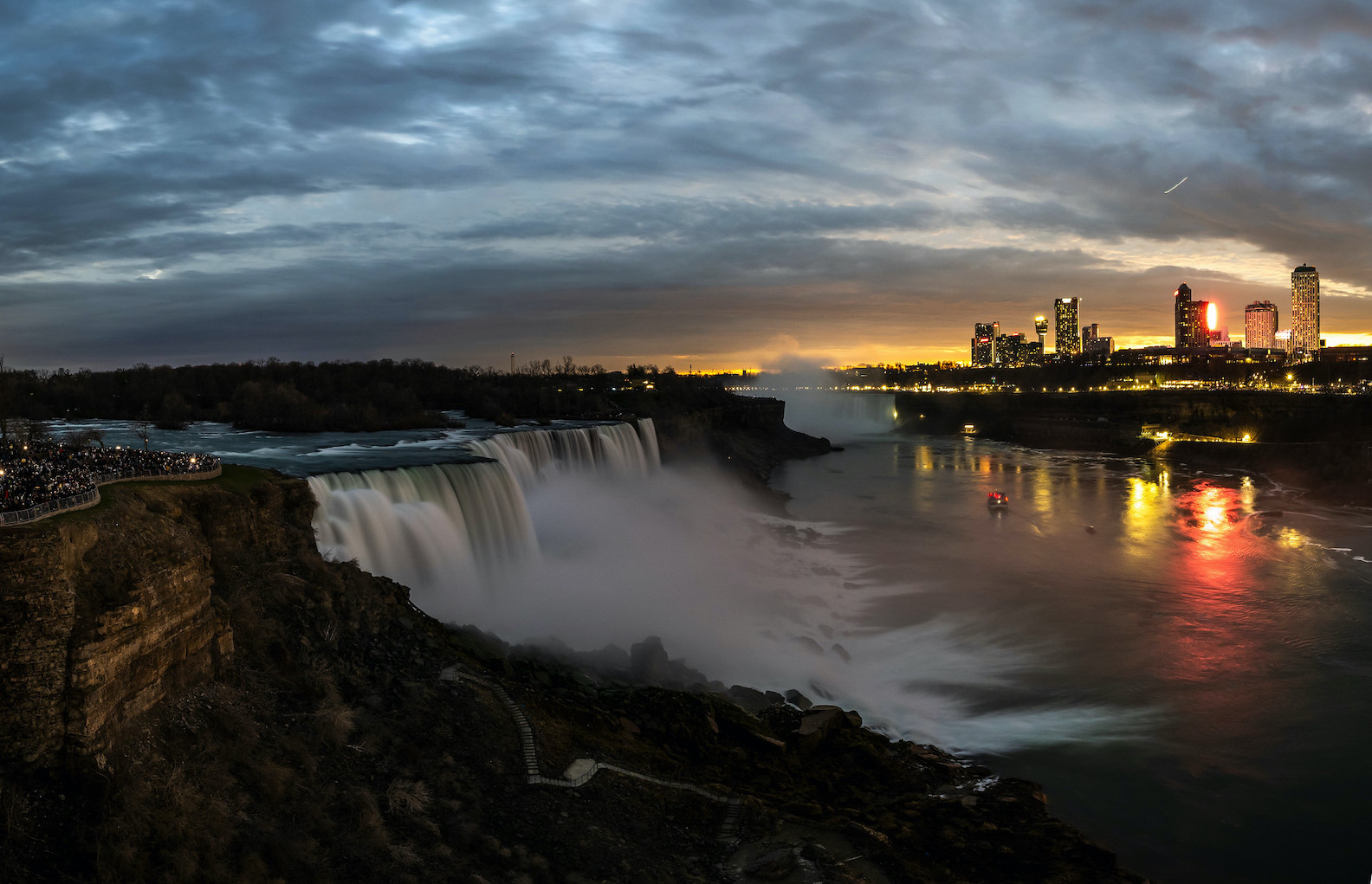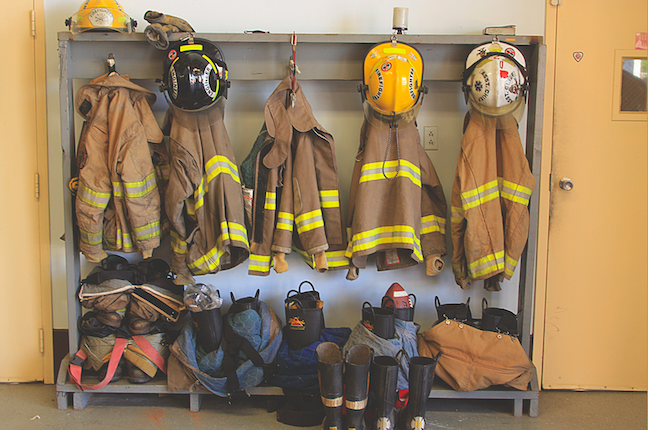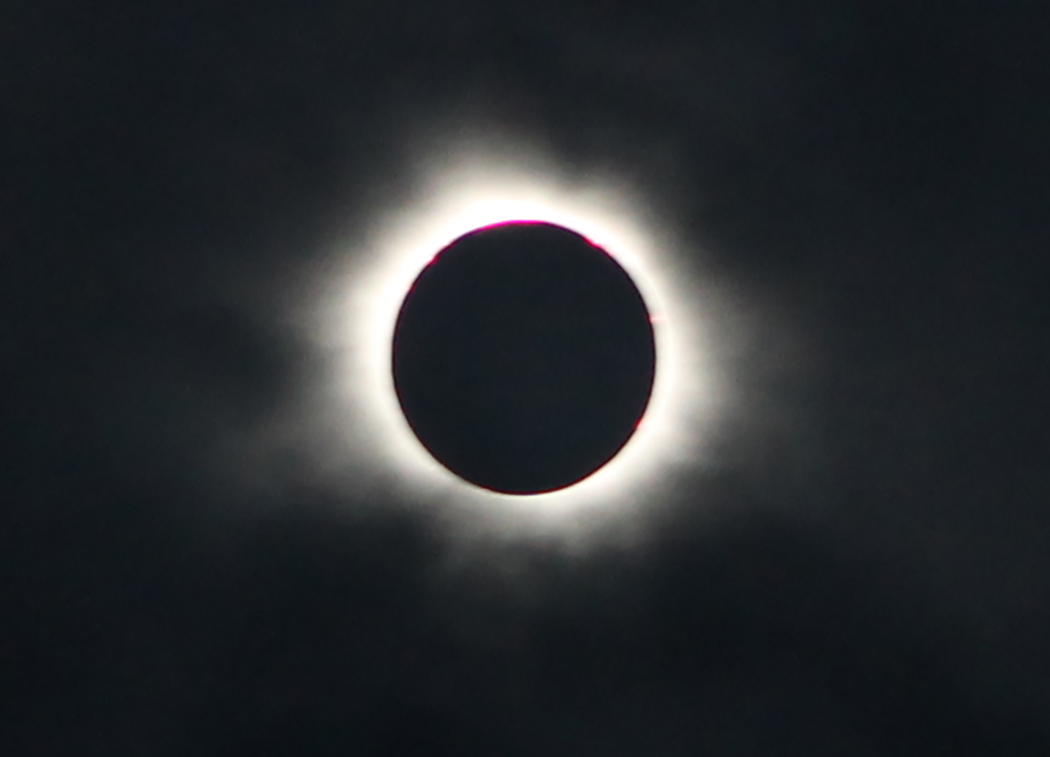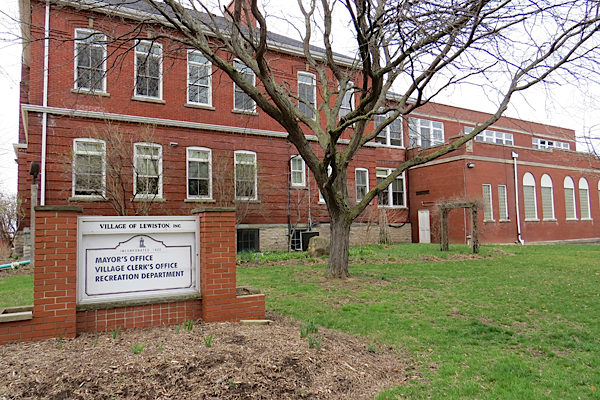On March 22, Grand Island resident Paul Leuchner met with I National Aeronautics and Space Administration officials at their Glenn Research Center in Cleveland to take temporary possession of a lunar rock sample from the 1971 Apollo 15 mission. The sample, encased in a solid pyramid of clear Lucite, was being loaned to the Buffalo Geological Society for display at its annual gem and mineral show that weekend.
"As you might imagine, the procedure to get permission to place the moon rock on display was quite involved. However, the real surprise came when I was designated the official NASA courier for this nearly four billion year old priceless artifact," said Leuchner, who is the Buffalo Geological Society's first vice president.
NASA couriers are responsible for the security and care of lunar samples while in transit and at all times when they are on public display. They have to guarantee that the sample remains in their possession at all times except when secured in an approved combination safe overnight. When the artifact is displayed, the courier has to be stationed nearby and is expected to respond to questions from the general public. At the end of the day that same person has to remove the moon rock sample from the display and physically secure it in accordance with NASA requirements.
This particular moon rock was collected by Apollo 15 Astronaut James Irwin during one of the Lunar Land Rover excursions to the Hadley Rille-Appenine region at the edge of the Mare Imbrium. The Mare Imbrium is the fabled right eye of the legendary "Man in the Moon" that can be easily observed with a telescope or even a good set of binoculars when the moon is full. Of course, it's not really an eye at all. Actually, it's a vast lava plain that formed after a massive asteroid collision with the moon's surface. The moon rock sample is a form of basalt that contains the minerals pyroxene and plagioclase, a form of feldspar.
During the recent Gem and Mineral Show sponsored by the Buffalo Geological Society, more than 4,700 people had an opportunity to observe and photograph this lunar rock sample. The Buffalo Geological Society, established in 1938, is an organization dedicated to the advancement of education in the geological sciences bringing together all who share an interest in rocks, minerals, fossils, and the lapidary arts. Additional information about the society and its work can be found at
https://bgsny.org/.
Leuchner is shown preparing the lunar rock for public display.
